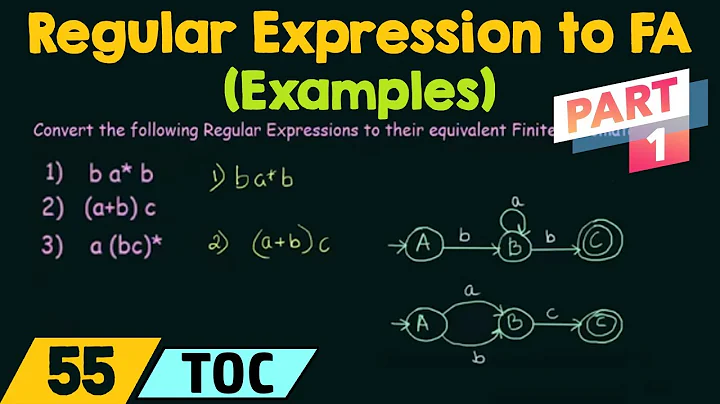Master the Art of Sentence Transformation: A Simple Guide!
Table of Contents
- Introduction
- Formation of Simple Sentences
- Independent Clause
- Subject and Predicate
- Ideas in a Simple Sentence
- Formation of Compound Sentences
- Independent Clauses
- Ways to Join Independent Clauses
- Converting Compound Sentences to Simple Sentences
- Three Steps to Conversion
- Identifying Independent Clauses and Conjunctions
- Converting Clauses using Participle, Preposition, or Infinitive
- Framing the Simple Sentence
- Examples of Conversion
- Using Participle
- Using Preposition
- Using Infinitive
- Using "Not only but also"
- Exercise to Practice
- Conclusion
Article
Introduction
In this video, we will delve into the topic of transforming compound sentences into simple sentences. Understanding this process can help us enhance our writing skills and make our sentences more concise and clear. We will discuss the formation of simple and compound sentences, explore the steps to convert compound sentences into simple ones, analyze examples for better comprehension, and conclude with an exercise to practice our skills. So let's get started!
Formation of Simple Sentences
Before we dive into converting compound sentences, let's first refresh our knowledge about simple sentences. A simple sentence consists of a single independent clause, which means it has one subject and one predicate. However, a simple sentence can express one idea or more, utilizing infinitives, participles, or prepositions. It's essential to understand these components to grasp the process of converting compound sentences.
Formation of Compound Sentences
Compound sentences are composed of multiple independent clauses. These clauses are joined in four different ways: coordinating conjunctions, correlative conjunctions, conjunctive adverbs, and punctuations. Coordinating conjunctions, such as "and," join independent clauses to create compound sentences. Correlative conjunctions, like "not only ... but also," exhibit a sense of contrast or balance. Conjunctive adverbs, on the other hand, express a connection or transition between independent clauses. Lastly, punctuations, such as semicolons or dashes, can also be used to join independent clauses.
Converting Compound Sentences to Simple Sentences
Now that we have a solid foundation of simple and compound sentences, let's focus on the process of converting compound sentences into simple ones. This conversion involves three essential steps.
The first step is to identify the two independent clauses and the conjunction that joins them. By understanding the structure of the compound sentence, we can proceed towards simplifying it effectively.
The second step involves identifying a way to convert one of the clauses into a participle, preposition, or infinitive. To help us with this conversion, we can refer to a table with specific guidelines. For example, the conjunction "if" suggests using a participle with the verb's "-ing" form or "having" with the verb's third form.
In the third step, we convert one of the independent clauses into the chosen form (participle, preposition, or infinitive) and construct the final simple sentence. It is essential to maintain the same meaning as the original compound sentence while ensuring clarity and conciseness.
Examples of Conversion
To further illustrate the process of converting compound sentences into simple ones, let's examine a few examples. These examples will demonstrate various conjunctions and the corresponding conversions using participle, preposition, or infinitive.
-
Participle Conversion:
- Compound Sentence: "The thief saw the police, and he ran away."
- Simple Sentence: "Seeing the police, the thief ran away."
-
Preposition Conversion:
- Compound Sentence: "He is very poor, but he does not complain."
- Simple Sentence: "In spite of him being poor, he doesn't complain."
-
Infinitive Conversion:
- Compound Sentence: "We must eat, or we cannot live."
- Simple Sentence: "We must eat to live."
-
"Not only but also" Conversion:
- Compound Sentence: "Ram not only plays football but also plays cricket."
- Simple Sentence: "Besides playing football, Ram plays cricket."
The examples above showcase the versatility of the conversion process and highlight how we can transform compound sentences into simpler versions without losing the intended meaning.
Exercise to Practice
To consolidate our understanding, let's engage in a little exercise. Below are three compound sentences that you need to convert into simple sentences. Take a moment to solve these exercises and share your answers in the comments. Don't worry; there are hints in the video description if you need them.
- "I watched this video and learned the transformation of sentences."
- "She was awarded because she was beautiful."
- "He was very upset, but he did not show it."
Feel free to pause the video, solve the exercise, and then continue to hear the answer and feedback.
Conclusion
In conclusion, the transformation of compound sentences into simple sentences is an essential writing skill. It improves the clarity, conciseness, and impact of our sentences. By following the three-step process of identification, conversion, and construction, we can effectively convert compound sentences while maintaining their intended meaning. With practice and understanding, we can become proficient in this transformative process and enhance our overall writing abilities. Remember to strive for simplicity and clarity in your sentences, as it ultimately leads to more effective communication. Good luck with your practice and implementation!
 WHY YOU SHOULD CHOOSE SaasVideoReviews
WHY YOU SHOULD CHOOSE SaasVideoReviews







